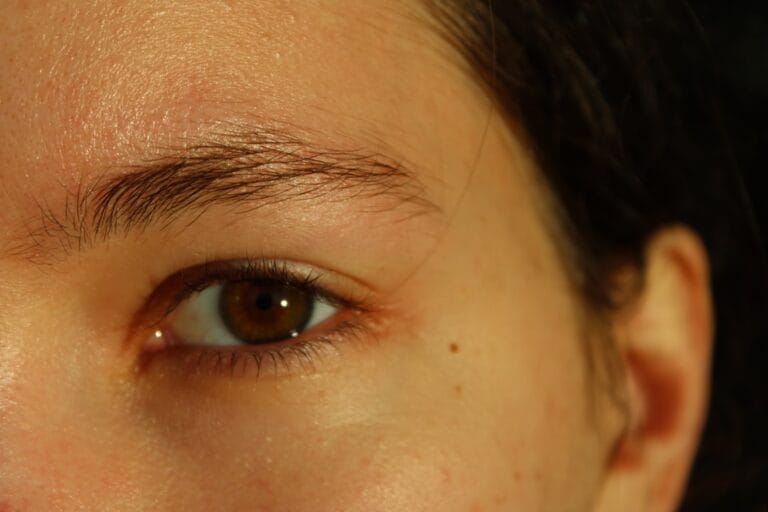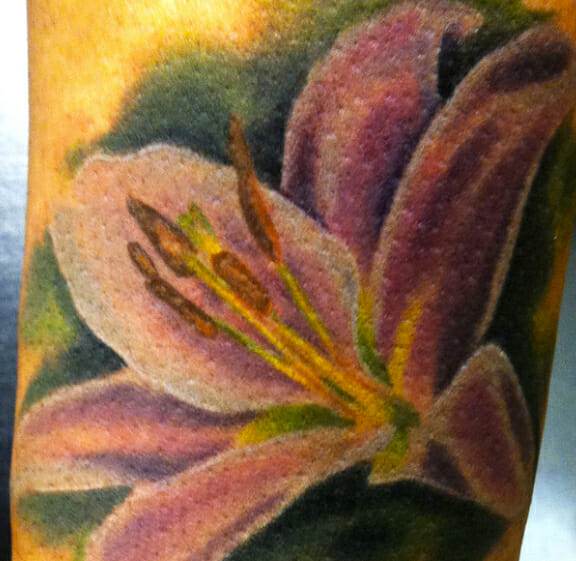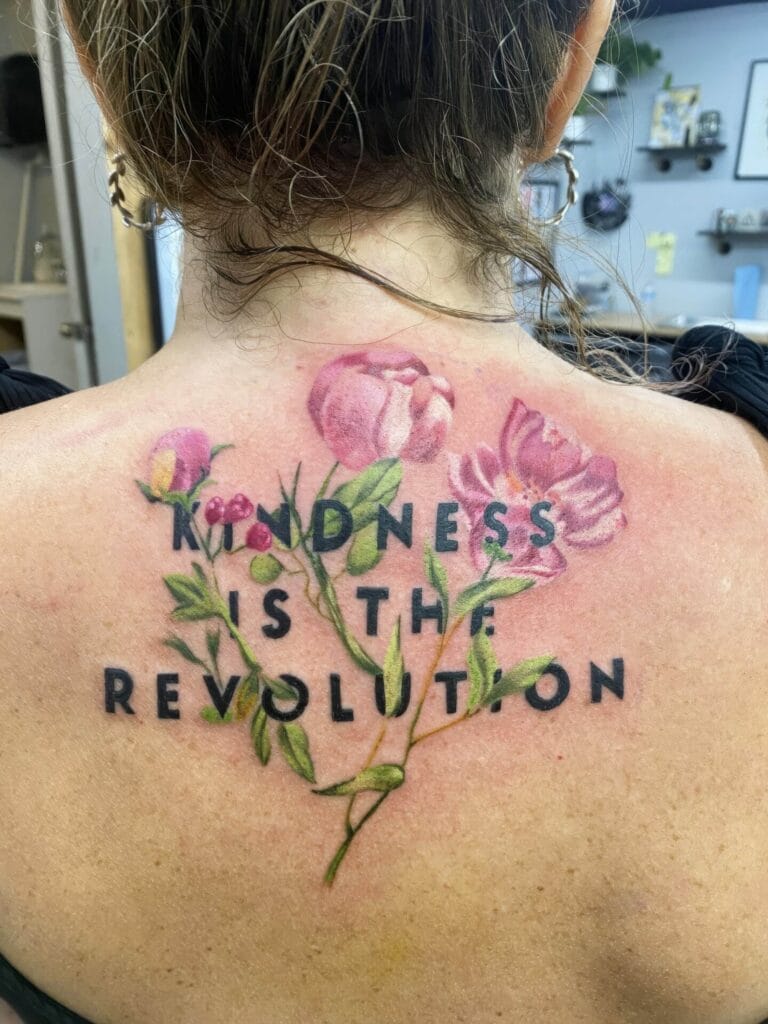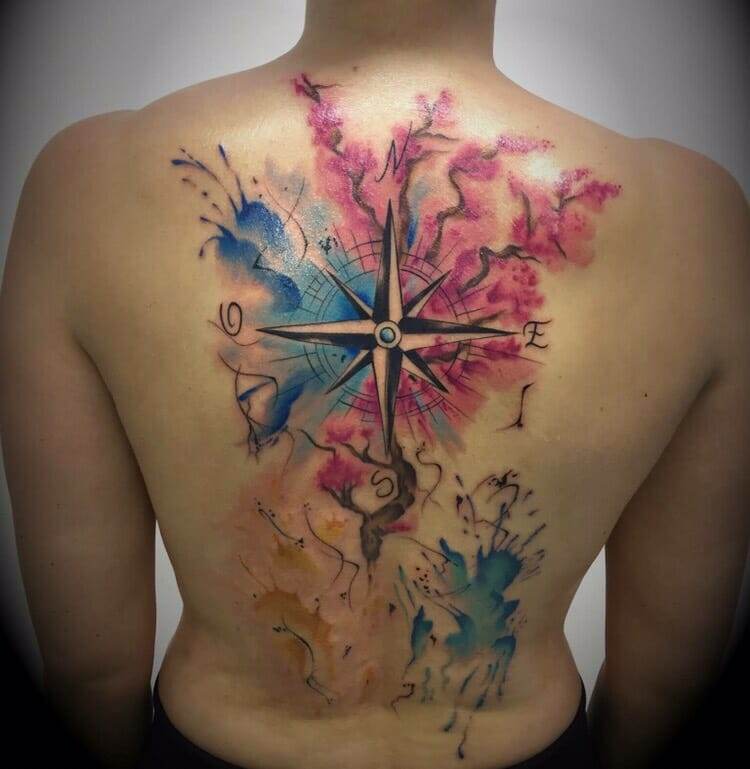
Geometric and mandala tattoos have become increasingly popular in recent years. These tattoo styles are characterized by intricate patterns and symmetrical designs that create a visually stunning and aesthetically pleasing effect. The popularity of geometric and mandala tattoos can be attributed to their versatility, symbolism, and the appeal of symmetry. In this article, we will explore the history, significance, and artistry behind these tattoo styles, as well as their cultural and spiritual significance. We will also delve into the psychology of geometric tattoos and discuss the process of creating these intricate designs. Whether you are considering getting a geometric or mandala tattoo or simply appreciate the beauty of these art forms, this article will provide you with a comprehensive understanding of these tattoo styles.
The History and Significance of Geometric and Mandala Tattoos
Geometric tattoos have a long history that can be traced back to ancient civilizations such as the Egyptians, Greeks, and Mayans. These cultures used geometric patterns in their artwork and architecture, believing that these shapes held spiritual significance and represented the order and harmony of the universe. In many ancient cultures, geometric symbols were used as a form of protection or to convey messages about one’s identity or status.
Mandala tattoos, on the other hand, have their origins in Hinduism and Buddhism. The word “mandala” is derived from Sanskrit and means “circle.” Mandalas are intricate geometric designs that represent the universe or cosmos. They are often used as a tool for meditation and spiritual growth. Mandalas are believed to symbolize unity, wholeness, and the interconnectedness of all things.
Both geometric and mandala tattoos have gained popularity in recent years due to their aesthetic appeal and the desire for meaningful tattoos. These tattoo styles offer individuals a way to express their spirituality, personal beliefs, or simply appreciate the beauty of these intricate designs.
The Art of Sacred Geometry: Exploring the Symbolism Behind Geometric Tattoos
Sacred geometry is a term used to describe the belief that certain geometric shapes and patterns hold spiritual or divine significance. These shapes are believed to represent the fundamental building blocks of the universe and can be found in nature, architecture, and art. In the context of tattoos, sacred geometry is often used to create visually striking and meaningful designs.
Common geometric shapes used in tattoos include circles, triangles, squares, and hexagons. Each shape carries its own symbolism and meaning. Circles, for example, represent unity, wholeness, and infinity. Triangles symbolize balance, harmony, and the trinity. Squares represent stability and grounding, while hexagons symbolize balance and harmony.
The symbolism behind these shapes can vary depending on cultural or personal beliefs. For some, these shapes may represent spiritual concepts such as the balance between masculine and feminine energies or the interconnectedness of all things. For others, they may simply appreciate the aesthetic appeal of these geometric patterns.
The Beauty of Symmetry: How Geometric Tattoos Create Balance and Harmony
One of the defining features of geometric tattoos is their use of symmetry. Symmetry refers to a balanced arrangement of shapes or patterns that are identical on both sides of a central axis. This creates a sense of harmony and balance in tattoo designs.
Symmetry is visually pleasing to the human eye and is often associated with beauty and perfection. It is believed that our brains are wired to find symmetry appealing because it represents order and balance. When it comes to tattoos, symmetry can create a sense of visual harmony that draws the viewer’s attention and creates a pleasing aesthetic.
In geometric tattoos, symmetry is often achieved through the use of repeating patterns or mirrored designs. This creates a sense of balance and order that can be visually striking. Whether it’s a simple geometric shape or a complex mandala design, symmetry plays a crucial role in creating a visually appealing tattoo.
The Meaning Behind Mandala Tattoos: Spiritual and Cultural Significance
Mandala tattoos hold deep spiritual and cultural significance. In Hinduism and Buddhism, mandalas are used as a tool for meditation and spiritual growth. They are believed to represent the universe or cosmos and are often used as a visual aid for focusing the mind during meditation.
The circular shape of mandalas represents the cyclical nature of life, death, and rebirth. It symbolizes the eternal cycle of existence and the interconnectedness of all things. Mandalas are often used as a symbol of unity, wholeness, and balance.
In addition to their spiritual significance, mandalas also have cultural significance in various traditions around the world. For example, Native American tribes use mandalas in their artwork and ceremonies to represent the interconnectedness of all living beings and the harmony of nature.
The Intricacy of Geometric Tattoos: From Simple Shapes to Complex Designs

Geometric tattoos can range from simple shapes to complex designs that incorporate multiple patterns and symbols. The level of intricacy depends on the individual’s preference and the skill of the tattoo artist.
Simple geometric tattoos often feature basic shapes such as circles, triangles, or squares. These designs can be minimalistic and understated, yet still carry deep symbolism. For example, a small triangle tattoo may represent balance and harmony, while a circle tattoo may symbolize unity and wholeness.
On the other end of the spectrum, complex geometric tattoos can feature intricate patterns and multiple layers of symbolism. These designs often require a skilled tattoo artist who specializes in geometric tattoos. They may incorporate sacred geometry, mandala elements, or other symbols that hold personal meaning for the individual.
The Evolution of Geometric and Mandala Tattoos in Modern Tattooing
Geometric and mandala tattoos have evolved over time to incorporate new techniques and styles. In the past, these tattoos were often done in black ink and featured bold lines and simple shapes. However, modern tattoo artists have pushed the boundaries of these styles, experimenting with color, shading, and intricate details.
Today, geometric and mandala tattoos can be found in a wide range of styles, from minimalistic black ink designs to vibrant, colorful pieces. Tattoo artists have also started incorporating elements of other tattoo styles, such as realism or watercolor, into geometric and mandala tattoos, creating unique and visually stunning designs.
Current trends in geometric and mandala tattooing include the use of negative space, dotwork, and linework. Negative space refers to the intentional use of blank space within a tattoo design to create contrast and emphasize certain elements. Dotwork involves using small dots to create shading or texture in a tattoo design. Linework refers to the use of thin lines to create intricate patterns or details.
The Psychology of Geometric Tattoos: Understanding the Appeal of Symmetry
The appeal of geometric tattoos can be attributed to the psychological concept of symmetry. Symmetry is pleasing to the human eye because it represents order and balance. Our brains are wired to find symmetry appealing, which is why we often find symmetrical faces or objects more attractive.
Symmetry is also associated with feelings of calmness and harmony. When we see a symmetrical design, our brains perceive it as balanced and orderly, which can create a sense of visual harmony. This is why many people are drawn to geometric tattoos – they provide a sense of balance and order in an otherwise chaotic world.
In addition to the appeal of symmetry, geometric tattoos also offer individuals a way to express their individuality and personal beliefs. These tattoos can be customized to include symbols or patterns that hold personal meaning for the individual. Whether it’s a simple shape or a complex design, geometric tattoos allow individuals to create a unique and meaningful piece of art on their skin.
The Versatility of Geometric and Mandala Tattoos: Ideas for Creative Designs
One of the reasons why geometric and mandala tattoos have become so popular is their versatility. These tattoo styles can be customized to fit individual preferences and can be incorporated into a wide range of designs.
For example, geometric tattoos can be combined with other tattoo styles, such as realism or watercolor, to create a unique and visually stunning design. They can also be used to create patterns or textures within a larger tattoo design, adding depth and complexity to the overall piece.
Mandala tattoos can also be customized to fit individual preferences. They can be combined with other symbols or elements that hold personal meaning for the individual. For example, a mandala tattoo could incorporate a lotus flower, which symbolizes purity and enlightenment in Buddhism.
Whether you prefer a simple geometric shape or a complex mandala design, there are endless possibilities for creative and unique tattoo designs within these styles.
The Process of Creating Geometric and Mandala Tattoos: From Sketch to Skin
Creating a geometric or mandala tattoo requires skill and precision. The process begins with a consultation between the client and the tattoo artist. During this consultation, the client will discuss their ideas, preferences, and any specific symbols or elements they would like to incorporate into the design.
Once the design is finalized, the tattoo artist will create a stencil or outline of the design. This stencil is then transferred onto the client’s skin using transfer paper or freehand drawing. The artist will then begin the tattooing process, using a tattoo machine to create the desired design.
Geometric tattoos often require precise linework and shading to create the desired effect. The artist may use different needle sizes and techniques to achieve different textures or patterns within the design. Mandala tattoos, on the other hand, often require intricate dotwork or linework to create the intricate patterns and details.
The tattooing process can take several hours or multiple sessions, depending on the size and complexity of the design. It is important to find a skilled tattoo artist who specializes in geometric or mandala tattoos to ensure that the design is executed properly and accurately.
The Future of Geometric and Mandala Tattoos: Trends and Innovations in Tattoo Artistry
As tattoo artistry continues to evolve, so do the styles and techniques used in geometric and mandala tattoos. In recent years, there has been a trend towards more intricate and detailed designs, incorporating elements of other tattoo styles such as realism or watercolor.
Innovations in tattoo technology have also impacted the future of geometric and mandala tattoos. For example, advancements in tattoo machines and ink have made it possible to create more precise linework and shading, resulting in more detailed and visually stunning designs.
Another trend that may impact the future of geometric and mandala tattoos is the use of augmented reality (AR) or virtual reality (VR) technology. Some tattoo artists are experimenting with using AR or VR to create interactive tattoo designs that come to life when viewed through a smartphone or other device. This could open up new possibilities for creating dynamic and visually engaging geometric and mandala tattoos.
Geometric and mandala tattoos have become increasingly popular in recent years due to their versatility, symbolism, and aesthetic appeal. These tattoo styles offer individuals a way to express their spirituality, personal beliefs, or simply appreciate the beauty of these intricate designs. Whether you are considering getting a geometric or mandala tattoo or simply appreciate the artistry behind these styles, this article has provided you with a comprehensive understanding of these tattoo styles. From the history and significance of these tattoos to the process of creating them, we have explored every aspect of geometric and mandala tattoos. So why not consider these tattoo styles for your next piece of body art?
If you’re interested in the art of tattooing, you might also enjoy reading about the healing process of a tattoo. Funhouse Redemption Ink provides a comprehensive guide on what to expect during the healing process, including tips for proper aftercare. Understanding how tattoos heal can help ensure that your new geometric or mandala tattoo looks its best for years to come. Check out the article here: https://redemptioninksd.com/2023/10/16/healing-process-of-a-tattoo-from-funhouse-guesthouse-tattoo-what-to-expect/






